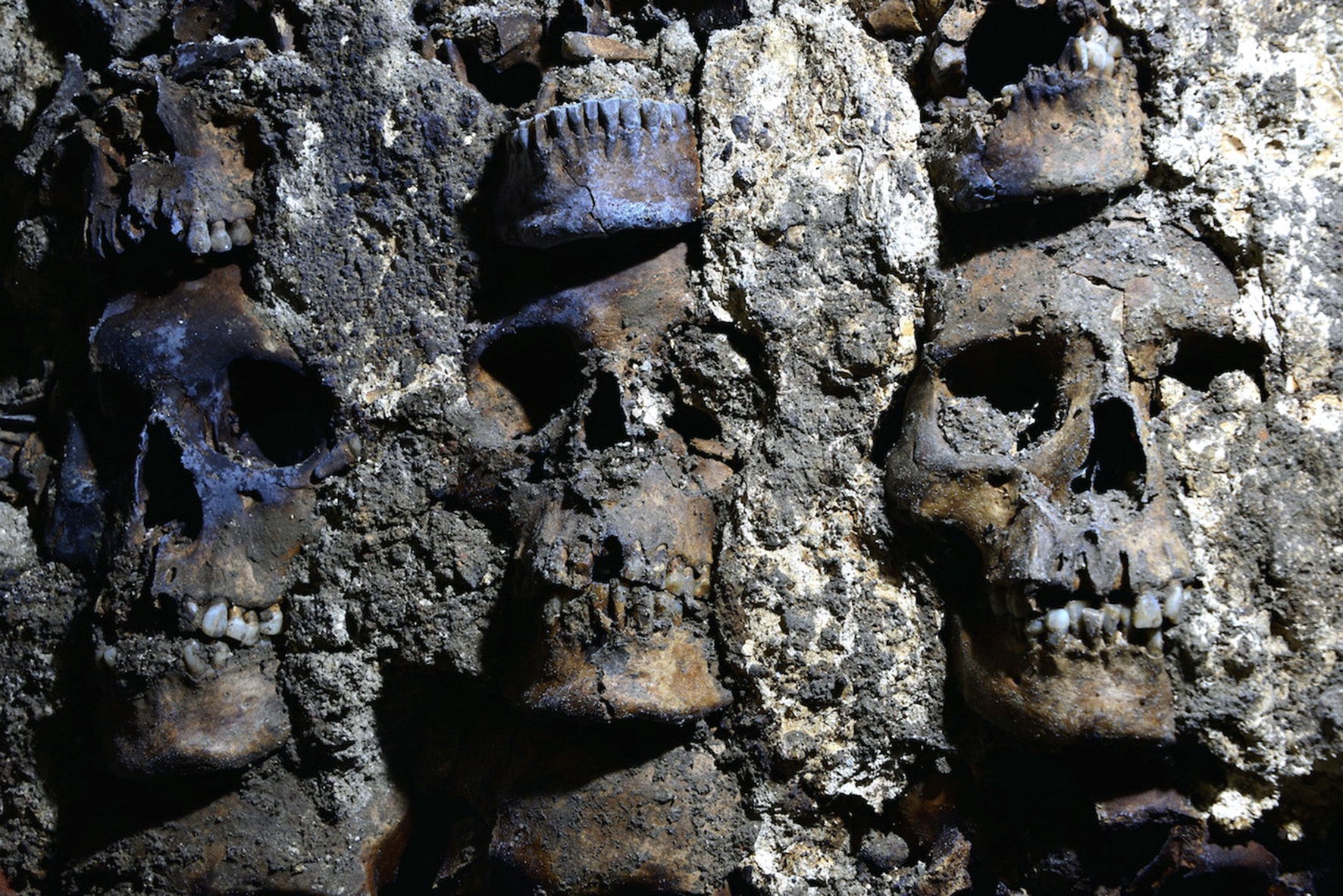New part of Aztec ‘tower of skulls’ discovered by archaeologists in Mexico
Bone fragments from more than 100 men, women and children found

Your support helps us to tell the story
From reproductive rights to climate change to Big Tech, The Independent is on the ground when the story is developing. Whether it's investigating the financials of Elon Musk's pro-Trump PAC or producing our latest documentary, 'The A Word', which shines a light on the American women fighting for reproductive rights, we know how important it is to parse out the facts from the messaging.
At such a critical moment in US history, we need reporters on the ground. Your donation allows us to keep sending journalists to speak to both sides of the story.
The Independent is trusted by Americans across the entire political spectrum. And unlike many other quality news outlets, we choose not to lock Americans out of our reporting and analysis with paywalls. We believe quality journalism should be available to everyone, paid for by those who can afford it.
Your support makes all the difference.Archaeologists in Mexico have discovered the skulls of more than 100 men, women and children in newly unearthed sections of an Aztec tower of human remains.
The skull tower, which is said to date to between 1486 and 1502, was found five years ago in the centre of Mexico City by the National Institute of Anthropology and History (INAH).
In March, another 119 skulls were uncovered on the eastern side of the tower by a team from the institute’s Urban Archaeology Programme, according to a statement released by the INAH last week.
At least three were children’s skulls, identifiable because of their size and underdeveloped teeth.
This brings the total number of skulls found so far at the site – located near the Aztec Templo Mayor – to 603.
It is thought that the cylindrical structure, called the Huey Tzompantli, was one of seven displays of human skulls in the Aztec capital of Tenochtitlan, modern-day Mexico City.
Speaking about the new discovery, Mexico’s culture minister, Alejandra Frausto, said: “The Templo Mayor continues to surprise us, and the Huey Tzompantli is without doubt one of the most impressive archaeological finds of recent years in our country.”
Although it is unclear exactly who the individuals were, they are presumed to have been killed during sacrifices to the gods.
Archaeologist Raul Barrera told Reuters: "Although we can't say how many of these individuals were warriors, perhaps some were captives destined for sacrificial ceremonies.
“We do know that they were all made sacred. Turned into gifts for the gods or even personifications of deities themselves.”
The Huey Tzompantli struck fear into the Spanish conquistadors and as a result appeared in the writings of Hernán Cortés y Bernal Díaz del Castillo, the statement said.

Join our commenting forum
Join thought-provoking conversations, follow other Independent readers and see their replies
Comments